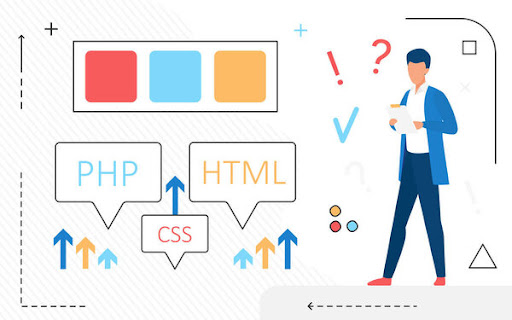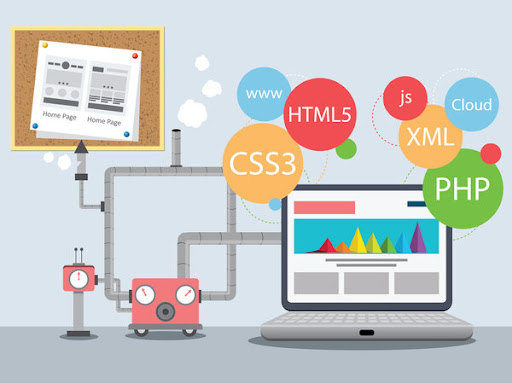The rise in preference for no-code tools and software is very evident. Various no-code platforms and programs are growing every year. Businesses are switching from the traditional large IT departments to outsourced no-code solutions. There is a positive association with no-code tools, with as much as 71% of respondents believing that this sector of software development will continue to rise in the next few years.
- No-code development is gaining more traction every year
There is no way of knowing the limits and power that no-code tools and software will bring to the future of industries. As more people continue to switch to no-code and venturers provide no-code tools and software services, the shift in this new type of software development is slowly becoming more apparent.
No-code tools and software provide more accessible ways for ordinary citizens to produce software products with minimal or no coding. The term “citizen developer” is very apt as a common layman’s term for non-technical coders. The ordinary citizen has a chance to build software without necessarily spending a long time first becoming experts in a particular programming language.
Over the next few years, businesses will be eyeing the permanent integration of no-code tools and software, increasing opportunities for citizen developers. As Gartner predicts, “By 2025, 70% of new applications developed by organizations will use low-code or no-code technologies, up from less than 25% in 2020.”
- No code software developments also present some limitations to enterprises and the citizen developer workforce
Do note that there is no such thing as a wholly faultless and flawless software development process. It’s a growing industry without the absence of challenges and a learning curve. A huge part of innovation is constant improvement, including the niche for no-code software development.
If you are starting a business and looking to invest or integrate no-code solutions, these are some things to be wary of. No-code development has its limitations, giving all industries a point of contention to consider. It’s not just people in the no-code development sector who will learn, but all businesses continue to adapt to the persistence of no-code.
1. No-code has low scalability
No-code tools and software are significantly new in trend and preference. Despite its steady growth in recent years, traditional software development still holds a more extensive reign in creating software products. With less time in the development sphere, the no-code sector still has so much improvement and innovation to undertake.
No-code tools and software are less scalable than traditional development tools. At best, from a macro point of view, no-code presents a minimal set of solutions that may tackle specific business needs. For businesses to feel the impact of no-code, there should be a bigger plan than entirely relying on no-code.
Take, for example, large corporations and businesses. Each department has its system, relying on various programs, software, and applications. The goal of every working oragnisation is to keep everything smooth, like a well-oiled machine. Efficiency requires a lot of integration and merging, increasing the demand for a singular working system.
The kind of work for these moves and transitions requires a high demand. No-code tools and software often only tackle one aspect at a time. No-code products are usually modular and closely integrated into the source platform or program.
2. No-code results in less in-depth software development proficiency
One of the biggest benefits of the no-code movement may be its limitation. The rise in citizen developers is evident as more companies take in no-code solutions. Though the presence of professional coders is still prominent, the number of citizen coders is becoming more prominent in specific industries. It’s not uncommon to find software products created by somebody from a different field of expertise.
One drawback and limitation of no-code is the decrease in proficiency in software development. There is an apparent difference between no-code and traditional programming languages. No-code tools and software allow people not to code a single line. Consequently, citizen coders, in this aspect, may not have the knowledge and expertise for specific programming languages.

How does the lack of knowledge in programming language become a problem in a sphere where no-code rules? The problem lies in the ability or the outlook of citizen coders to truly understand the programs they create. At best, dragging and dropping elements present little to no background on the behind-the-scenes of each product development.
Proficiency in certain programming languages pays off. Companies pay for that proficiency and expertise in programming, with professional developers earning from knowing the inside and outs of the software. “According to the survey, Clojure and F# are the programming languages that are associated with the highest salaries worldwide in 2021, with average of 95 and just over 81 thousand U.S. dollars respectively.” (Vailshery, 2022)
3. No-code often becomes a quick-fix solution
Writing code and creating effective software for all types of business needs takes a lot of time. The global average for developers writing code falls between 1 to 4 years. A tiny percentage of the global professional developer population has spent over 50 years writing code. As such, the rise of no-code becomes a very attractive alternative as a fast solution to this reality.
There is a vast difference between finding efficient solutions and relying on quick fixes to solve issues. Since no-code presents the benefit of the efficient and fast turnover of solutions, businesses may depend on it for every single problem. Ultimately, the entire business will look like a collection of individual no-code programs barely integrated.
No business wants to think only of a short-term outlook or goal. Entrepreneurs want to build something that lasts. As such, companies should look at business strategies from a long-term viewpoint. Using no-code as a short-term, quick-fix solution to a recurring problem may be a double-edged sword.
Ultimately, the goal is always to find a solution that is as timeless as possible. Making no-code platforms and software the fastest solution option all the time can become costly when companies and organisations don’t foresee future needs and goals. Though it’s not necessarily a limitation in the use of no-code tools and software, it can cause problems for businesses that fail to think ahead.
4. No-code has limited build
No-code tools and software don’t require users to type in code lines to create programs. Instead, each platform has a pre-given set of elements and functions. Depending on the no-code tool that you may use, you are limited to what the platform provides.
Building with no-code sometimes means the product will be limited in function. Whatever it is that citizen coders create in the space is what it will be indefinitely unless the source itself upgrades or provides more elements and other tools. Developers can only build from the given set of instruments, features, elements, integrations, and operations at their disposal.
The workarounds for limited no-code tools and software can become very costly in the end. When businesses want to integrate features and functions that aren’t present in the original software or platform, the resulting product or system is already lacking in operation. The rigidity of no-code software development may limit changes and upgrades in any business operation.
One of the best ways to mitigate or avoid this issue is to plan ahead. It’s always best to ask questions like this:
- How long is the company going to use the product software?
- Are there other functions that the business wants to embed in the software?
- Is the platform, software, or system providing all the tools and options necessary to sustain no-code products?
- How will the business handle sudden changes in the program function based on any essential adjustment?
- Is it better to invest in a more tailor-fitted, unique solution than an easy-build platform?
5. No-code draws lapses in security and safety

Security and safety are very crucial maintaining factors that make or break businesses. The last thing any organisation, team, or company wants is to have low security and many loopholes in any system. These lapses in security can create a bottleneck in daily business operations. Even worse, security issues can snowball into significant unexpected expenses.
No-code software development often presents only the forefront of any product. In relation to the limitation on the proficiency of the resulting program, the concern scopes on how well developers know their product. How can citizen coders address internal issues on something they don’t know inside out?
It’s also important to ask about the future of these no-code tools and software the company is currently using. What happens if the platform is bought out and liquidated by its founders? What happens to your created no-code programs? These aspects aren’t technically linked to the program, but remember that no-code is still part of businesses and resulting economies.
Professional coders are the ones typing the code and running the test of created software. It’s like knowing your creation inside and out, figuring out all corresponding parts and how they work. Any issue in security will only take minutes to pinpoint, especially with given documentation. The same expertise and immediate reaction can’t be the same for no-code software and tools when developers only know the elements they integrated.
6. No-code may hinder efficient switching to other options
Investing in a no-code platform or tool is like becoming loyal to one thing alone. No-code tools and platforms are standalone methods of software development. As such, developers need to use what’s in the platform. This can become a real problem when small businesses want to switch to another provider or tool.
No transition is ever easy regarding changing suppliers, resources or partners. Imagine starting over on making the program again if you need to branch out and scale the business functions. Switching to another no-code solution can become very time-consuming and costly.
Citizen developers don’t own the source code of the created program. At best, the only things developers can contain are the following: the know-how of making the program, the design, and the overall external aspects of the program. Figuring out the backend part of the program may become the bottleneck of switching to another provider.
7. No-code presents less customisation and complexity
Using no-code tools and software means relying on a given set of features and functions. It can be challenging to switch or start over again with a new platform when businesses want to expand or change features and functions. In contrast with professional software development, customisation options for no-code are not as accessible. Enterprises need to work within the bounds of the no-code tool they choose.

While business owners and companies have a wide range of elements, some systems require a more focused approach and unique software solution. There is less overlap between citizen coders and professional developers in the context of customisation. Experienced software developers use their proficiency in a specific language and create all things necessary using language.
When big companies require a more unique, tailor-fitted, and specific system, using no-code isn’t the solution to the problem. It’s better to rely on a dedicated team of developers to create these systems that are fit only for the business. You can’t customise something from a modular perspective where already given parts fit together to make a whole.
8. No-code can turn expensive rapidly with a lack of control
The best thing to do is always plan when businesses and operations are in place. While it’s crucial to focus on the present, businesses and markets change rapidly. Big enterprises and small businesses experience all challenges that force workforces to think ahead.
Using no-code tools and software answers the smaller functions businesses can outsource to a more efficient solution. The question now falls on the potential long-term issues of the company. What is the goal of your business in the next five years? How does no-code benefit or limit that goal?
No-code solutions often turn very expensive not because of the initial investment in creating these products. When people don’t foresee and plan for the potential issues and goals, the expenses pile up. Businesses will be forced to develop another no-code solution, system or program to address a business need that should’ve been accounted for from the start.
No-code tools are, at best, a great solution to recurring business needs that owners are certain won’t change over time. The last thing companies need is pouring a lot of financial resources into something that becomes obsolete in the long run.
Successful no-code projects
The limitations of no-code tools and software don’t automatically lead to the demise of first-time switchers to no-code. There are many successful projects that utilise no-code development that became successful ventures. Despite the limitations, in the end, it’s the implementation and planning that uplifts businesses.
Travel booking websites such as Ocean Air Travel require a lot of functions. The website was built using the no-code platform Bubble. The website wasn’t originally a no-code product.

According to an article with Petter Amlie as the project lead, “The decision to switch to the Bubble platform was a major one, considering we had already invested in existing technology over many years. But in the end, Bubble’s philosophy of allowing quick experimentation and iteration was so well-aligned with our values that when the decision was made, we never looked back.”
How to maximise the use of no-code tools and software?
No-code tools and software aren’t perfect solutions to all business needs. Nevertheless, these instruments present a solution to many problems in the business sector. The responsibility and decision to invest in no-code ultimately falls on these businesses.
Though no-code has limitations, it doesn’t mean it’s not worth using or considering. For small business owners and large companies alike, ensuring that no-code solutions become optimal involves a lot of foresight. You can’t just decide to spend on no-code platforms or programs and not anticipate the needs of the business. More often than not, people should build with no-code with these limitations in mind already.





